A few weeks ago we took a look at the quad-port Intel X710-T4L. Now, we get to review the dual-port Intel X710-T2L. If you look at the model numbers and immediately think that it sounds a lot like a card with half the ports, then that is a fair assumption. Let us get on to the review and take a look at the card.
Again, since we wanted to ensure that we are using genuine cards here, this review sample came directly from Intel. Hopefully, that helps our readers identify genuine parts.
Intel X710-T2L 10Gbase-T NIC
The Intel X710-T2L is a dual-port card and looking at the front we see some significant differences between this and the quad-port version. One of the most obvious here is that the heatsink is much smaller.
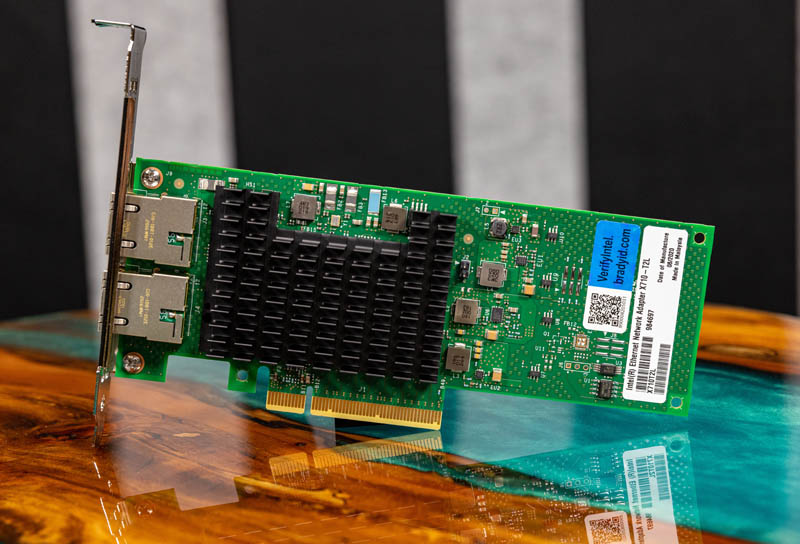
The rear of the PCB is barren. One of the points we wanted to discuss here is that the card is a PCIe Gen3 x8 card. For 2x 10Gbps links, Usually, even a Gen3 x4 link is fine. Now that servers are on the Gen4, this is a bit inefficient. This card was released before the X710-T4L version so it was squarely released in Intel’s Gen3 generation pre-Ice Lake.
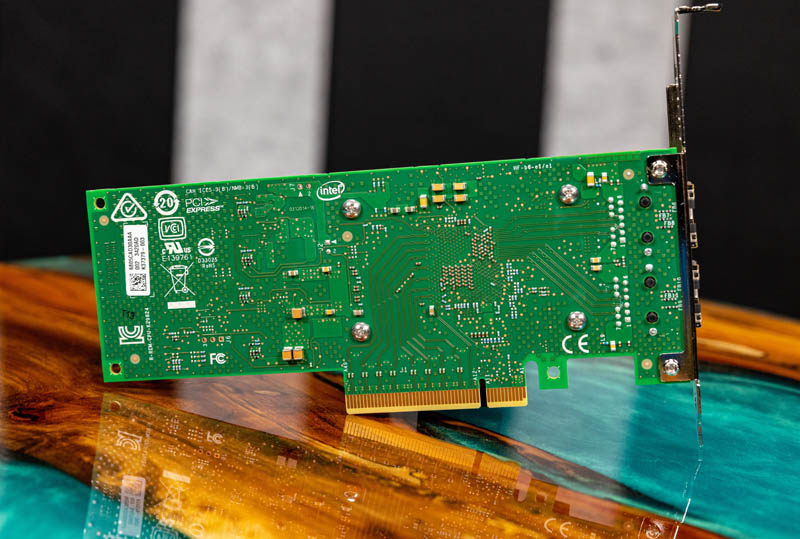
In terms of ports, we get two RJ45 ports that give us 10Gbase-T. As we will see in a bit, this also gives us 2.5GbE and 5GbE speeds. Intel’s full-height bracket has a lot of room for airflow in the dual-port version compared to the quad-port version.
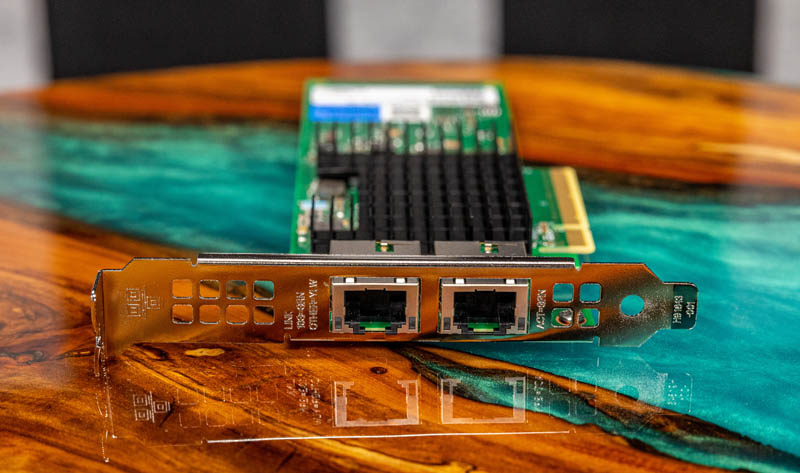
The card also came with a low-profile bracket but we are just showing the full-height version here.
Power Consumption and Features
In terms of power consumption, here is the official table for the X710-T2L and X710-T4L:
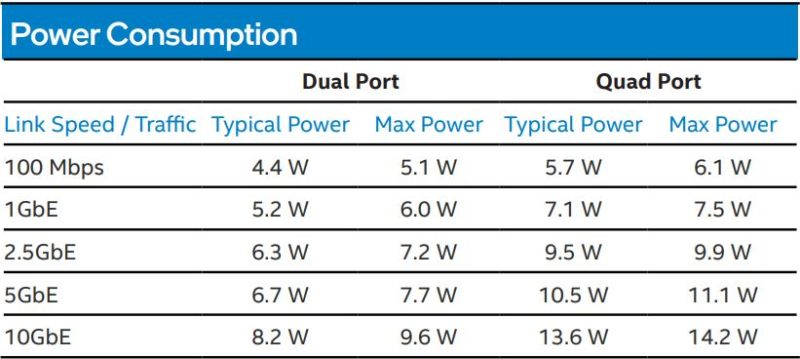
The reason we wanted to show this is that the X710-T2L is not half the power consumption of the quad-port version. Still, it is notably lower power, especially at higher speeds. Getting real for a moment, in a modern high-end server that can hit 1kW or more for a dual-socket server, a few watts may not sound like a lot. With lower-power and embedded servers, 5W can still be substantial. This is also about half the power of the X540-T2 generation.
This is the ethtool output for the X710-T2L (which looks like the -T4L version):
Supported ports: [ TP ]
Supported link modes: 100baseT/Full
1000baseT/Full
10000baseT/Full
2500baseT/Full
5000baseT/Full
Supported pause frame use: Symmetric
Supports auto-negotiation: Yes
Supported FEC modes: Not reported
Advertised link modes: 100baseT/Full
1000baseT/Full
10000baseT/Full
2500baseT/Full
5000baseT/Full
Advertised pause frame use: No
Advertised auto-negotiation: Yes
Advertised FEC modes: Not reported
Speed: 10000Mb/s
Duplex: Full
Port: Twisted Pair
PHYAD: 0
Transceiver: internal
Auto-negotiation: on
MDI-X: Unknown
Supports Wake-on: g
Wake-on: g
Current message level: 0x00000007 (7)
drv probe link
Link detected: yes
This is going to look very similar to the X710-T4L. The newer controller adds support for 2.5GbE and 5GbE speeds. One difference is that there was not a public X710-T2 like there was a X710-T4.
Intel X710-T2L Performance
We received about the performance we would expect from a solution like this. First, we looked at dual 10Gbase-T performance:
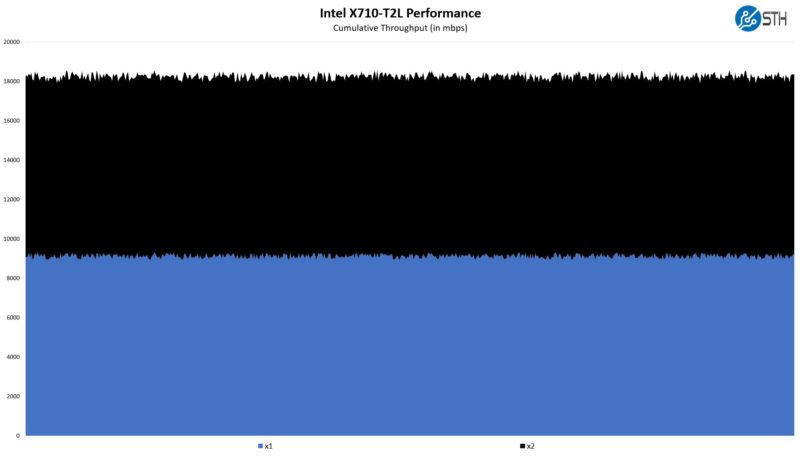
Next, we looked at multi-gig performance running at 2.5GbE and 5GbE speeds:
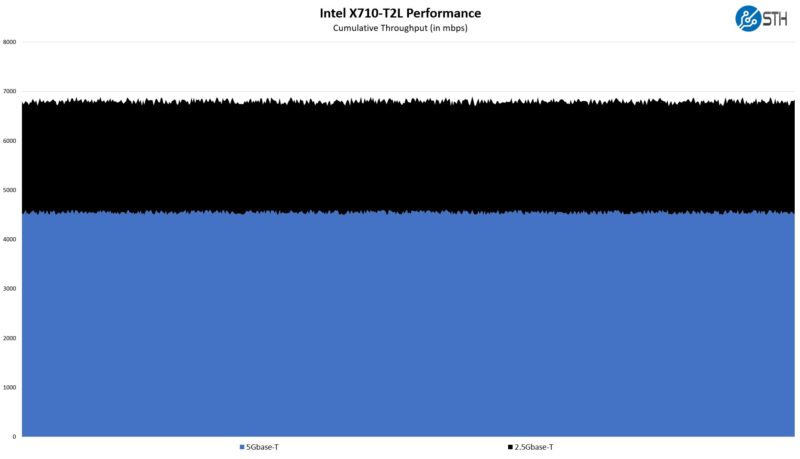
This is fairly basic testing, but we were able to confirm that the multi-gig functionality is working. That is what we would want to see from this NIC.
Final Words
One of the other big changes is the price compared to the quad-port version. The X710-T2L is about $200 less or around 40% less for 50% fewer ports. There are two ways to look at this. One could say it is more expensive per port and also uses more power on a per-port basis. The other way to look at it is that there is a base cost for a card and this is a less expensive way to get 1/2.5/5/10GbE ports. Not every application needs more 10Gbase-T ports.

Overall, the Intel X710-T2L is a nice card. It is one of the newer, lower power generation cards. At around half of the power consumption of the PCIe Gen2 dual 10Gbase-T cards, and with the addition of 2.5GbE and 5GbE, it is more versatile. At the same time, using a $150 port for 2.5GbE when an Intel i225 NIC chip costs under $6 feels like it is an inefficient use of hardware unless you need that capability. Still, overall this is a nice card and certainly one we would recommend over the previous generations.

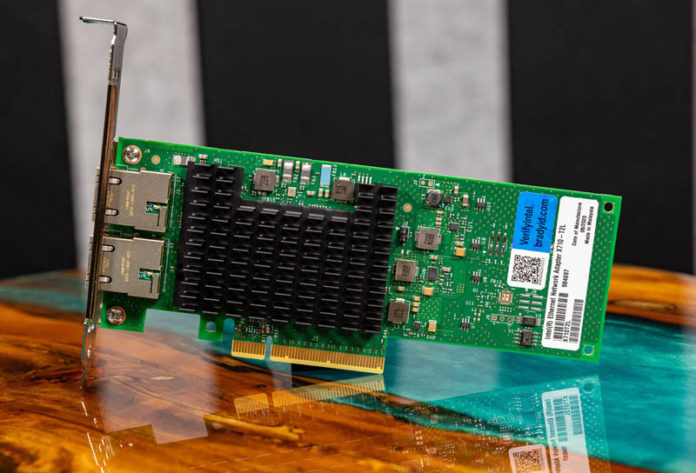



Could not get these to work correctly in Dell’s R7525 servers w/Milan CPUs. Same cards work fine in other systems, including R740s. Dell refused to acknowledge it as an issue and wanted me to buy their Dell-branded versions.
Went with Broadcom cards instead, and may go with someone other than Dell next time.
if only Intel knew how to do offloads properly…after 82599 it’s all downhill
Would be interested to know if this card works in a x4 slot (even if it means less than 100% full duplex performance).